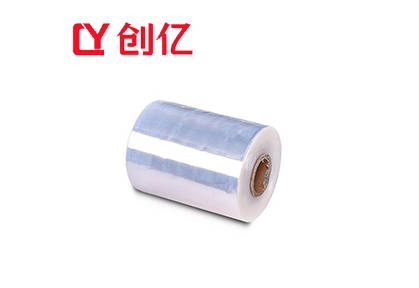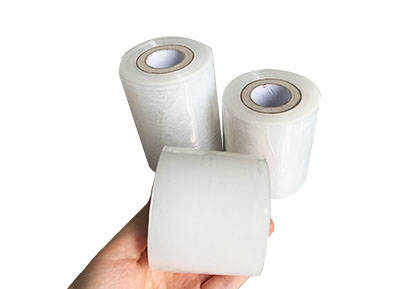Stretch Film vs Cling Film: Key Differences You Should Know
2025-08-01
If you run a business, manage a warehouse, or simply want to wrap items well, picking the right film matters a lot. It affects your work, saves money, and keeps products safe. At Foshan Weide Chuangyi Packaging Materials Co., Ltd., we know how crucial smart choices are. Stretch film and cling film are two popular options, but people often mix them up. This blog explains their differences clearly. It helps you choose the best film for your needs.
Overview of Stretch Film and Cling Film
To pick the right film, you need to know what stretch film and cling film are. Let’s look at their basic features and uses.
What is Stretch Film?
Stretch film, sometimes called stretch wrap, is a stretchy plastic film. It’s used to hold and protect items during shipping or storage. Made from linear low-density polyethylene (LLDPE), it stretches tightly around objects. This keeps them secure. Our stretch film products are built for tough industrial jobs.
What is Cling Film?
Cling film, also known as plastic wrap or food wrap, is a thin, bendable plastic film. It’s mainly used to seal food and keep it fresh. Made from polyvinyl chloride (PVC) or low-density polyethylene (LDPE), it sticks to surfaces without glue. This makes it great for home and business food storage.
Common Applications in Packaging and Storage
Stretch film is common in warehouses and shipping. It secures pallets and protects goods on the move. Cling film is popular in homes, restaurants, and food factories. It wraps food to keep it fresh. Knowing these uses helps us understand their materials next.
Material Composition and Manufacturing Process
The materials and how these films are made shape their unique qualities. Let’s explore what sets them apart.
Types of Materials Used in Stretch Film
Stretch films are usually made from LLDPE. This material is strong and very stretchy. Some stretch films have special additives. These can protect against UV rays or static, making them useful for specific tasks.
Materials Used in Cling Film Production
Cling films are often made from PVC or LDPE. PVC is clear and sticks well, so it’s great for food. LDPE is more flexible and sometimes more eco-friendly. Each material suits different needs.
Differences in Manufacturing Techniques
Stretch films are made by blown or cast extrusion. Cast films are clearer, while blown films are stronger. Cling films are made similarly but designed to stick to themselves without stretching. These differences affect how they work, which we’ll cover next.
Physical Properties and Performance
The physical traits of stretch film and cling film decide what they’re best for. Let’s compare their key features.
Elasticity and Strength Comparison
|
Property |
Stretch Film |
Cling Film |
|
Elasticity |
Very stretchy, up to 300% |
Barely stretches |
|
Strength |
Tough, great for heavy items |
Okay for light items |
Stretch film stretches a lot. It tightly holds heavy pallets. Cling film doesn’t stretch much. It’s better for wrapping light things like food.
Transparency and Thickness Variations
Stretch films are 15 to 30 microns thick. They balance strength and clarity. Cling films are thinner, about 8 to 15 microns. They’re very clear, so you can see food easily. These differences affect their strength and use.
Resistance to Puncture and Tear
Stretch films resist punctures and tears well. They’re great for sharp or heavy items. Cling films are okay for light use but tear more easily. This limits their use in tough settings. Now, let’s look at how they’re used.

Application Techniques and Usage Scenarios
How you apply stretch and cling films affects how well they work. Let’s check out their methods and best uses.
Manual vs Machine Application for Stretch Film
You can apply stretch film by hand with a dispenser. Or, you can use machines for big jobs. Our hand stretch film is affordable for small businesses. Machines are faster for large operations.
How Cling Film is Applied in Domestic and Commercial Settings
Cling film is usually applied by hand. You wrap it around food or containers. In restaurants, it covers trays or seals packages. It sticks to itself easily, which makes it simple to use.
Suitability for Different Packaging Needs
Stretch film is great for securing pallets and protecting items from dust or water. It’s strong and reliable. Cling film is best for keeping food fresh. It stops air from getting in and keeps things clean. These differences lead to how they stick.
Adhesion Characteristics
How stretch and cling films stick to things defines their use. Let’s compare how they hold.
Self-Adhering Properties of Cling Film
Cling film sticks to itself and surfaces without glue. Its special design makes it stick tightly. This is perfect for sealing food containers.
Tension-Based Holding Mechanism in Stretch Film
Stretch film uses its stretchiness to hold items. When stretched, it grips tightly without sticking to the product. This is great for keeping big loads steady during shipping.
Cost Considerations and Efficiency
Cost matters when choosing a film. Let’s look at how stretch and cling films compare in price and value.
Cost Per Roll and Coverage Efficiency
|
Film Type |
Average Cost per Roll |
Coverage Efficiency |
|
Stretch Film |
$10–$50 (500–2000 ft) |
Covers large pallets well |
|
Cling Film |
$5–$15 (100–500 ft) |
Good for small items |
Stretch film covers more area, so it’s great for big jobs. Cling film is cheaper for small tasks like wrapping food.
Long-Term Value Based on Usage Volume
For big operations, stretch film saves money over time. It’s tough and can sometimes be reused. Cling film is cheaper at first but may need replacing often for non-food uses. Next, let’s talk about their environmental impact.
Environmental Impact and Sustainability
Being eco-friendly is a big deal in packaging today. Let’s see how stretch and cling films stack up.
Recyclability of Stretch Film Materials
Most stretch films, made from LLDPE, can be recycled at special centers. We at Foshan Weide Chuangyi focus on offering recyclable films. This helps reduce waste.
Biodegradability Concerns with Cling Films
PVC cling films don’t break down easily. This can be a problem for green-minded users. LDPE cling films are better for recycling but still add to waste if not handled right.
Innovations in Eco-Friendly Packaging Films
New ideas include biodegradable stretch films and compostable cling films. These options are kinder to the planet. They help businesses meet eco-friendly goals. Now, let’s see how industries use these films.
Industry-Specific Use Cases
Different industries prefer either stretch or cling film based on their needs. Let’s look at these choices.
Food Industry Preferences for Cling Film
Cling film is a favorite in food storage. It’s certified safe for food and keeps items fresh. Restaurants and homes rely on it daily.
Logistics and Warehousing Reliance on Stretch Film
Stretch film is key in shipping and storage. It secures pallets and protects goods during transport. Its strength makes it perfect for heavy jobs.
Safety, Hygiene, and Regulatory Compliance
Safety and rules matter in packaging. Let’s compare how stretch and cling films meet these standards.
Food-Grade Certification for Cling Films
Cling films for food must follow strict rules, like FDA or EU standards. This ensures they’re safe to touch food directly.
Industrial Safety Standards for Stretch Films
Stretch films meet rules for keeping loads stable and workplaces safe. They reduce risks during shipping and storage.
Choosing the Right Option Based on Your Needs
Picking the right film depends on a few factors. Here’s how to choose wisely.
Factors to Consider When Selecting a Packaging Film
Type of Product Being Wrapped
- Stretch Film: Best for non-food items, pallets, and industrial goods.
- Cling Film: Great for food and light packaging.
Storage Conditions and Transportation Needs
- Stretch Film: Good for long storage and shipping.
- Cling Film: Better for short-term storage, especially in fridges.
Budget Constraints
- Stretch Film: Costs more but works for big jobs.
- Cling Film: Cheaper for small or home use.
Foshan Weide Chuangyi Packaging Materials Co., Ltd. – A Trusted Supplier of Stretch Film
Foshan Weide Chuangyi Packaging Materials Co., Ltd. is a subsidiary of Foshan Xinmingyi Packaging Materials Co., Ltd. At Foshan Weide Chuangyi Packaging Materials Co., Ltd., we’re proud to offer top-quality stretch film solutions. With over 15 years in the industry, we’re a trusted name in Foshan, China. We serve customers all over the world.
Company Profile and Core Offerings
We provide a wide range of stretch films, including hand and machine types. They’re designed to be strong and efficient. Our films meet the needs of logistics, warehousing, and more.
Commitment to Quality, Innovation, and Customer Satisfaction
We use modern equipment and strict quality checks. Our team works hard to create new solutions. We want our stretch films to meet your needs. Contact us to learn more about how we can help.
Summary of Key Differences Between Stretch Film and Cling Film
|
Feature |
Stretch Film |
Cling Film |
|
Main Use |
Industrial packaging |
Food storage |
|
Material |
LLDPE |
PVC or LDPE |
|
Stretchiness |
Very stretchy |
Not stretchy |
|
How It Sticks |
Uses tension |
Sticks to itself |
|
Cost |
More expensive, great for big jobs |
Cheaper, good for small tasks |
Frequently Asked Questions (FAQs)
Q1 What is the main difference between stretch film and cling film?
A1 Stretch film is for industrial use. It’s very stretchy and strong, perfect for securing heavy loads. Cling film is for food storage. It sticks to itself and is less stretchy but great for sealing containers.
Q2 Can stretch film be used instead of cling film for food storage?
A2 No, stretch film isn’t usually safe for food. It may not meet food safety rules. Cling film is made for food storage and has the right certifications.
Q3 Is there an eco-friendly option available for both types of films?
A3 Yes, there are green options. Biodegradable stretch films and compostable cling films exist. They’re better for the environment and suit eco-conscious users.

